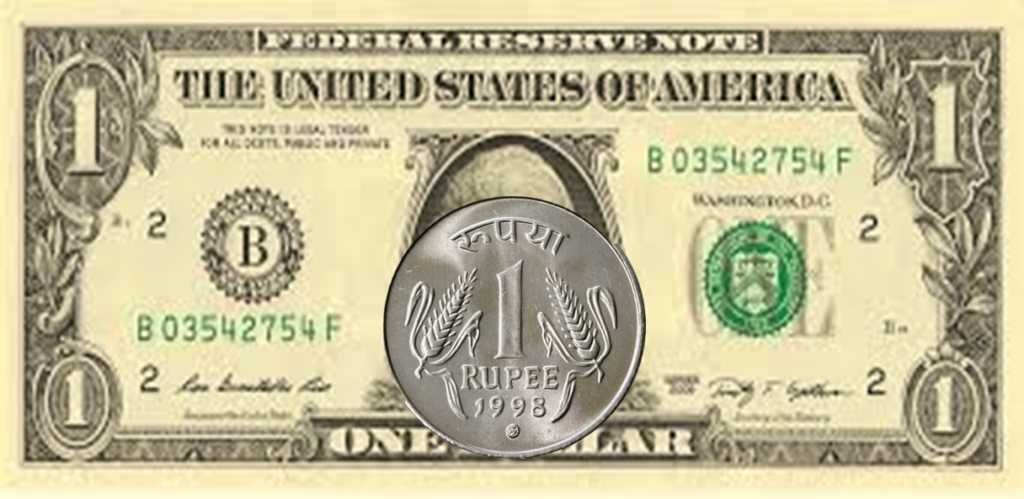There has been a lot of mayhem over the price of the Rupee depreciating against the US Dollar, but Moody’s investor service has said that India is among the 5 countries which are least vulnerable to currency pressures. Moody’s, along with Standard & Poor’s and Fitch Group, is one of the most reputed credit rating agencies. The reason Moody’s gave for India’s relative immunity to price pressure is the low dependence of Indian economy on the foreign investment. In a report on the impact of the strengthening of the US dollar on other sovereigns, Moody’s said “the appreciation of USD has prompted sharp currency depreciation and/or a significant decline in forex reserves in a number of emerging and frontier markets. However, India, China, Brazil, Mexico, and Russia are among the “least vulnerable” to currency pressures. Large savings channeled through the financial sector allows these economies to largely fund themselves domestically, thereby lowering exposure to volatile portfolio flows.”
The Rupee hit an all-time low on Thursday because foreign investors pulled out their money as rising crude oil prices deepened concerns about the country’s Current Account Deficit (CAD) and inflation dynamics. The rise in oil prices is a double whammy for India, because along with increases in import bills it is also responsible for the surge in inflation, which also contributes to fluctuations in the value of the Rupee. Due to rising oil prices, the CAD, which is the difference between the inflow and outflow of foreign exchange, widens and oil marketing companies like Indian Oil and Hindustan Petroleum pass the pressure of a rise in prices to the consumer which is in turn responsible for retail inflation. Moody’s said “although India’s CAD has widened, driven in part by the recent rise in oil prices, it remains modest as a percentage of GDP and is largely financed by equity inflows, including foreign direct investment. India’s significant build-up of foreign exchange reserves in recent years to all-time highs provides a support buffer to help mitigate external vulnerability risk.”
The Indian economy largely depends on domestic consumption which accounts for almost two-thirds of Gross Domestic Product (GDP). The Indian market is less reliant on exports than most other emerging markets, as exports account for just 11 percent of the GDP, as compared to China’s 19 percent and Russia’s 23 percent. Therefore, we are not as vulnerable to foreign capital as nations like that South Korea, Taiwan, and Singapore etc. Moody’s said “India’s large and relatively stable domestic financing base limits external vulnerability. India’s limited external vulnerability is supported by a large and relatively stable domestic financing base for government debt, which contributes to the economy’s resilience by sheltering it from abrupt changes in external financing conditions. India’s low dependence on foreign-currency borrowing to fund its debt burden limits the risk of currency depreciation transmitting into materially weaker debt affordability.”
Other investment agencies have expressed same sentiments about the Indian market. The money management firm, Franklin Templeton said, “The South Asian nation, the fastest-growing major economy in the world, enjoys relative insulation from external shocks as a booming middle class delivers enough domestic demand to counter the fallout from protectionism.” The investor sentiment is so high that WisdomTree Investment Inc. recommended investors allocate as much as 20 percent of their portfolios to Indian equities. The asset allocation strategist at WisdomTree, Gaurav Sinha said “one of those places that provide better risk-reward compared with emerging markets at large, especially China or more globally-linked countries, if I am investing in India, I am investing for the local consumption.”
So despite the mayhem caused by the opposition over the fall of the value of the Rupee, all the major reputed international credit agencies and investment firms have expressed their trust in the Indian economy. The structural reforms by the Modi government like GST, Insolvency and Bankruptcy Code, demonetization, RERA have brought macroeconomic stability to the Indian economy. Inflation is under control and fiscal deficit is at an all time low, while the GDP growth was at 7.7 percent in the last quarter. Therefore, the macroeconomic stability of the country will help to grow at a faster pace and short-term volatility like strengthening of the dollar will not impact the economic growth of the country.
Collapse of Rupee Part 2: Why this is a good sign for Indian manufacturing
